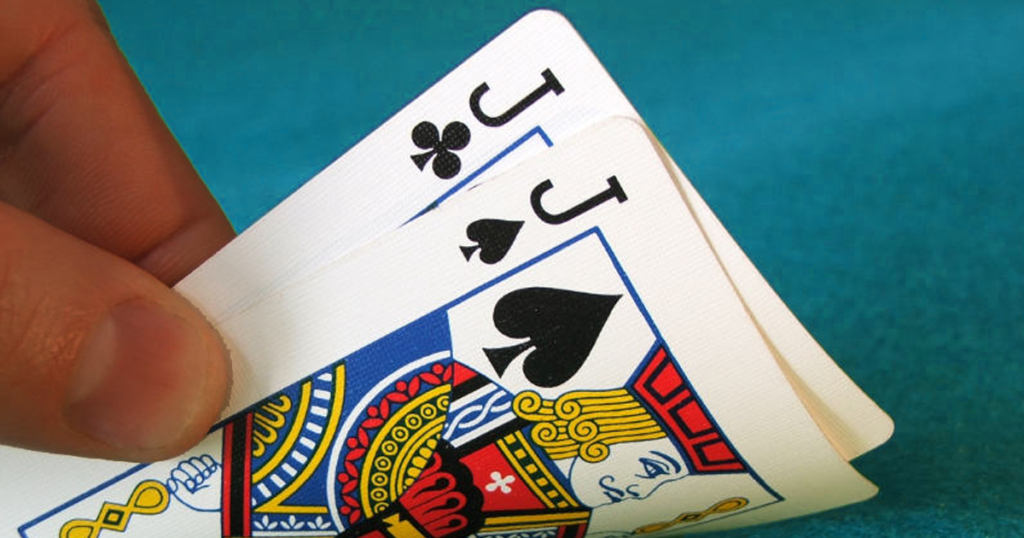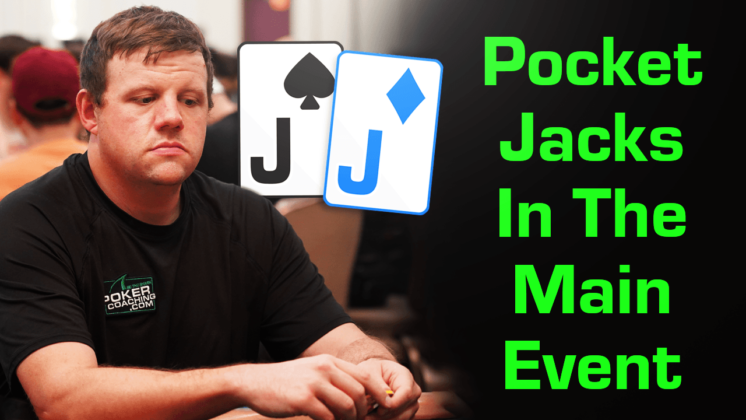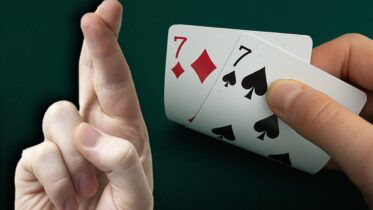There are poker players you will come across who speak adamantly about how they cannot stand playing pocket jacks. Often their uneasiness with fish hooks comes from a lack of understanding on how to play them properly. Read along below and envision yourself playing this hand from the 2022 World Series of Poker Main Event. What decision would you make? How would you play each street? Take the lessons I provide from this hand and prepare to apply them to your own game.
Scenario: You are playing in day one of the World Series of Poker Main Event with a stack of 100,000 and the blinds at 300/600. A good, tight cash game regular raises 1,400 UTG and it folds to you in the Lojack holding J♠-J♦.
The Game: WSOP Main Event
Effective Stack: 167 Big Blinds
Your Hand: J♠-J♦
Preflop Analysis
You have two suitable options, flatting or making the standard three-bet for 4,500. Pocket jacks fit well within both calling and three-betting ranges when facing an UTG raise from the Lojack. It is perfectly reasonable to never call and play a three-bet or fold strategy. A three-bet or fold strategy works quite well in these spots as when you are deep-stacked, playing a tight range and raising with only premium hands allows you to limit playing large, multi-way pots. If you are going to maintain a three-bet or fold strategy, be sure to fold pairs pocket sixes and worse citing your tightened range.
Action: You elect to call, which is followed by additional calls from the dealer and big blind. The flop comes 6♥-3♣-2♠ and both the big blind and the UTG cash game regular check.
Playing Pocket Jacks On The Flop

The Pot: 6,500
The Board: 6♥-3♣-2♠
Effective Stack: 164 Big Blinds Effective
Flop Analysis
With this flop, you should not have a betting range since you have no nut coverage. Additionally, the dealer and the big blind have pocket pairs in their range that could have easily flopped a set. Your range has almost zero connectivity with this board as opposed to your two opponents who could have smashed it. If you were to bet, only a small size like 1,500 is reasonable, but given the flop in this multi-way pot, checking is the best play.
Action: You check and the loose, passive fish on the button bets 5,200. The big blind and UTG players both fold and action is back onto you.
Facing A Large Bet With An Overpair

Despite the rather large bet made from your loose, passive opponent you cannot fold. While you should be concerned that they were willing to make such a large bet in a multi-way pot, a fishy opponent could make this play with pocket eights or nines they think are ahead. Do not raise your opponent, even if you are ahead not only do you cause them to fold out worse hands, but if they happen to have a set or 5-4 for the flopped straight you are just setting yourself up to get stacked.
Calling is the only reasonable option, you should proceed with caution and see what develops on the turn.
Action: You call and the turn card is the A♠. You check and your opponent checks as well, the river is the 9♦.
Going For Value On The River
The Pot: 16,900
The Board: 6♥-3♣-2♠-A♠-9♦
Effective Stack: 156 Big Blinds Effective
River Analysis
Since the loose, passive fish on the button checked back on the turn, it is safe to assume they do not have a flopped set or 5-4. While they could have an ace, most of their range is going to contain worse pairs you should target for value with a small bet. Not only does a small bet potentially get called by worse hands, but it keeps you from having to bluff catch when you check and your opponent decides to bet.
Conclusion
You bet 5,000 and your opponent calls. After revealing your pocket jacks, your opponent mucks their hands rewarding you with a sizeable pot. By recognizing your opponent’s tendencies and not backing down to their huge flop bet, you made the proper strategic decisions that ended up bringing the pot your way. If you enjoyed this article, be sure to check out my previous poker lesson where I cover how to play pocket aces on monotone boards.



